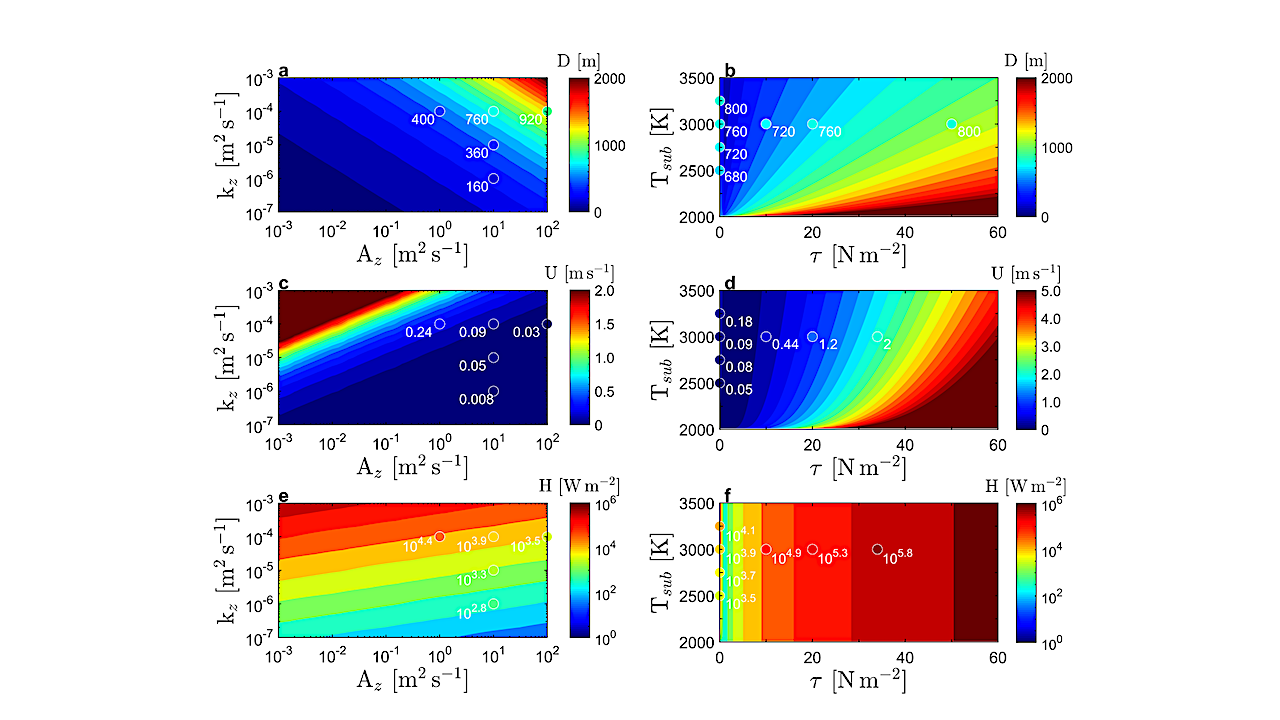Ocean Circulation on Tide-locked Lava Worlds, Part II: Scalings

On tidally locked lava planets, magma ocean can form on the permanent dayside. The circulation of the magma ocean can be driven by stellar radiation and atmospheric winds.
The strength of ocean circulation and the depth of the magma ocean depend on external forcings and the dominant balance of the momentum equation.
In this study, we develop scaling laws for the magma ocean depth, oceanic current speed, and ocean heat transport convergence driven by stellar and wind forcings in three different dynamic regimes: non-rotating viscosity-dominant Regime I, non-rotating inviscid limit Regime II, and rotation-dominant Regime III.
Scaling laws suggest that magma ocean depth, current speed, and ocean heat transport convergence are controlled by various parameters, including vertical diffusivity/viscosity, substellar temperature, planetary rotation rate, and wind stress.
In general, scaling laws predict that magma ocean depth ranges from a few meters to a few hundred meters. For Regime I, results from scaling laws are further confirmed by numerical simulations. Considering the parameters of a typical lava super-Earth, we found that the magma ocean is most likely in the rotation-dominant Regime III.
Yanhong Lai, Wanying Kang, Jun Yang
Comments: 22 pages, 7 figures; accepted for publication in Planetary Science Journal (PSJ)
Subjects: Earth and Planetary Astrophysics (astro-ph.EP)
Cite as: arXiv:2408.09985 [astro-ph.EP] (or arXiv:2408.09985v1 [astro-ph.EP] for this version)
https://doi.org/10.48550/arXiv.2408.09985
Focus to learn more
Submission history
From: Yanhong Lai
[v1] Mon, 19 Aug 2024 13:35:17 UTC (6,631 KB)
https://arxiv.org/abs/2408.09985
Astrobiology, Astrogeology,








